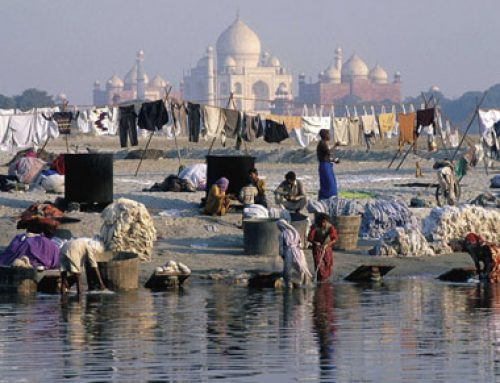
Highly magnified view of a cell wall made of lipids
When did the first lipids form?
Around four billion years ago, some of the amino acid molecules that were on the planet Earth began to join together randomly into bigger molecules with hundreds of atoms in them, called lipids. This happened in the water in the oceans on Earth, because there wasn’t any land on Earth yet four billion years ago.
What are amino acids?
The Hadean Eon
How old is the Earth?
All our biology articles
What are lipids made of?
Lipids are large hydrocarbon molecules – they’re long chains of hydrogen and carbon atoms, mixed with a few oxygen, phosphorus, and nitrogen atoms.
What are hydrocarbons?
More about molecules
All our chemistry articles
Why do lipids tend to form membranes?
One end of this big molecule is chemically attracted to water, while the other end of the molecule tries to get away from water (one example is oil not mixing with water). Because of this, lipids tend to arrange themselves into a long line called a membrane, with the water-loving side of the membrane touching the water, and the water-hating side of the membrane out of the water.
A lipids project: oil and water
Even better, the molecules can sometimes form a hollow sphere of molecules, with a space inside it (It looks like a circle in the picture because you are looking down at it from the top). That way the water-loving ends are all touching the water, but none of the water-hating ends are.

Lipid molecules forming a membrane two molecules thick
Why do lipids form bubbles?
A more complicated, but even better arrangement for the molecules, is to form a membrane two layers thick, so that all of the water-hating ends are safely enclosed, with the water-loving ends coating the outside *and* the inside of the sphere. That way, even if the sphere is full of water, the water-hating ends still don’t touch any water. The whole sphere, or bubble, is still too small to see, and only two molecules thick.
These lipid membrane molecules, also, could move apart a little bit to let water or other molecules, like proteins, in or out of their bubble. Check out this experiment to see how that works.
A project with soap bubbles
What are proteins?
From lipid membranes to living cells
In many ways, these lipid membrane bubbles were a lot like living cells, but they were not alive. In order to become alive, the membranes had to combine with RNA or DNA to make living cells.
What is RNA?
DNA molecules
How did cells evolve?
More than a billion years later, some cells began to use lipid membranes to make specialized parts for the cell. Lipid membranes make the outside of cell parts like the nucleus, the endoplasmic reticulum, the golgi bodies, the lysosomes, vacuoles, mitochondria, chloroplasts, and eyespots.
Parts of a cell
Learn by Doing: An experiment with oil and water
The next step to living things: cells
Bibliography and further reading about cell biology:




